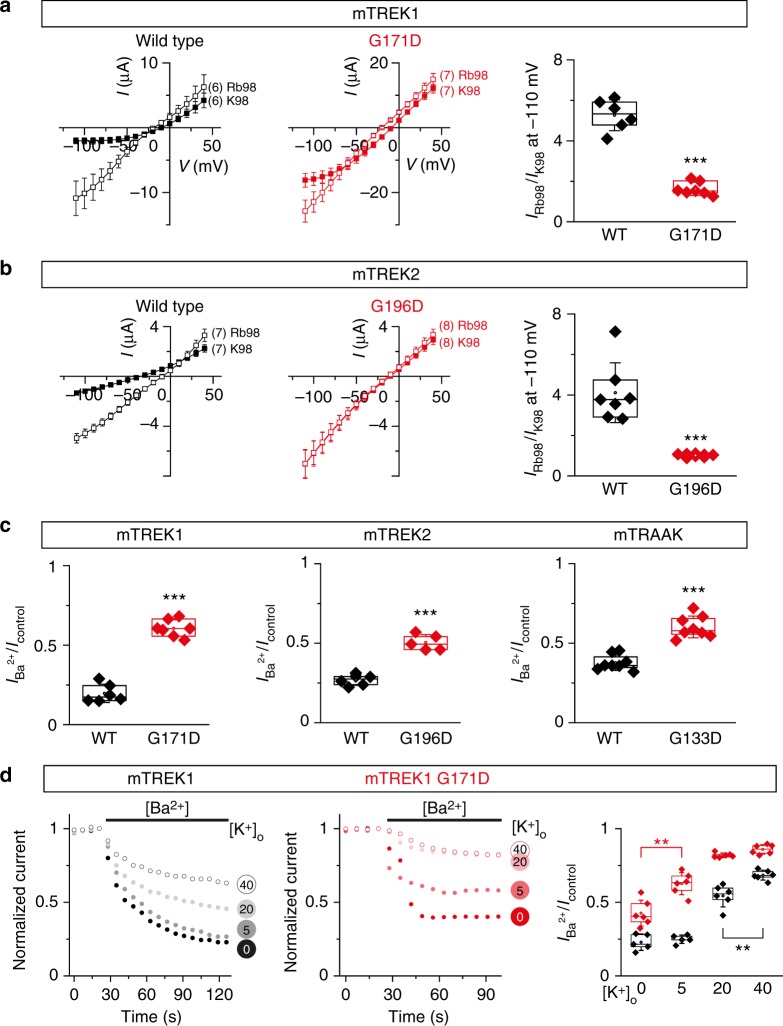Fig. 3.
TM2.6 mutations promote gating of mechano-gated K2P channels. a, b TM2.6 mutation affects TREK1 and TREK2 current increase induced by substituting potassium with rubidium. Current–voltage relationships of mTREK1 and mTREK2 channels; wild-type (black) and TM2.6 mutant (red) at 98 mM extracellular potassium (filled squares) and 98 mM extracellular rubidium (open squares). Each data point represents the mean ± standard error of mean, numbers in parentheses represent the number of oocytes tested for each condition. Rightmost panels: mean relative current increases were 5.3 ± 0.3 and 1.6 ± 0.1 for wild-type and mutant mTREK1, respectively, and 4.1 ± 0.6 and 1.01 ± 0.02 for wild-type and mutant mTREK2, respectively. Currents were recorded 24 h after injection of cRNA at 1 ng/oocyte. c Magnitude of Ba2+ inhibition is reduced in TM2.6 mutants of mechano-gated K2P channels. Ratios between currents under barium perfusion and currents under control perfusion at 0 mV, were significantly different for wild-type (black) and mutant channels (red). Mean ratios increased from 0.19 ± 0.02 (mTREK1) to 0.6 ± 0.02 (mTREK1 G171D), from 0.26 ± 0.01 (mTREK2) to 0.5 ± 0.01 (mTREK2 G196D), and from 0.37 ± 0.01 (mTRAAK) to 0.6 ± 0.02 (mTRAAK G133D). Currents were recorded 24 h after injection of cRNA at the following concentrations (in ng/oocyte): mTREK1 wild-type, 5; mTREK1 G171D, 1; mTREK2 wild-type, 3; mTREK2 G196D, 1; mTRAAK wild-type, 10; mTRAAK G133D, 0.1. d Inhibition of mTREK1 by 6 mM extracellular Ba2+ in the presence of increasing concentrations of extracellular K+ ([K+]o). Currents were recorded 24 h after injection of cRNA (mTREK1, black, 5 ng/oocyte; mTREK1 G171D, red, 1 ng/oocyte). Left and middle panels show normalized responses of one representative oocyte to barium challenge in the presence of [K+]o (0, 5, 20, and 40 mM). Right panel: ratio between currents under barium perfusion and currents under control perfusion at 0 mV. Each data point represents one oocyte; center lines, medians; open circles, means; box limits, 25th and 75th percentiles; whiskers, standard deviation. Student’s unpaired t-test (except (b), Mann–Whitney), **p < 0.01, ***p < 0.001

